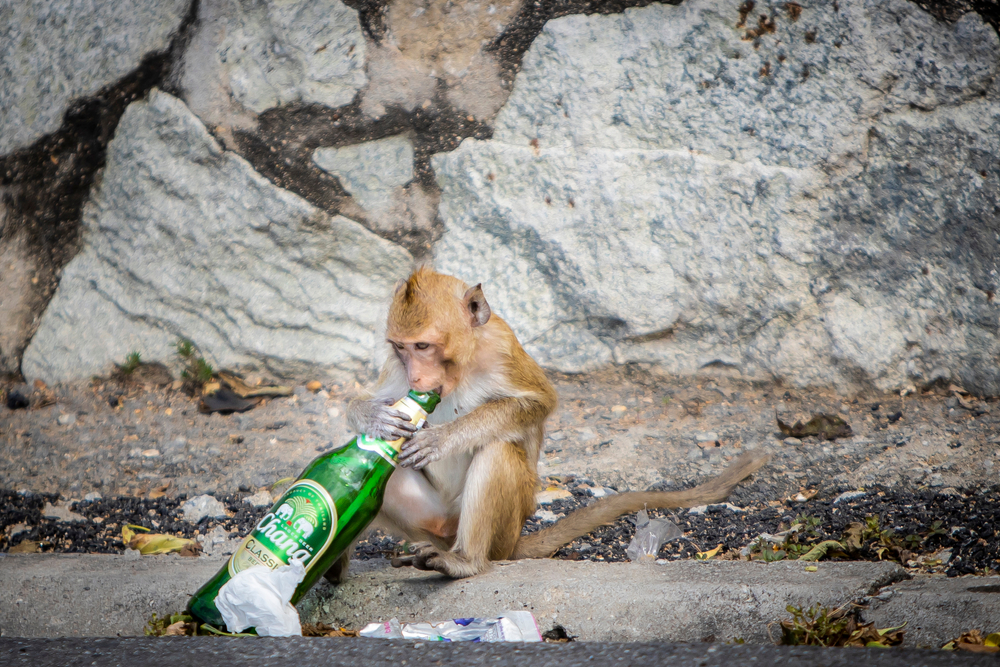Environment: Endangered Species
An endangered species is a species of animal or plant that is seriously at risk of extinction. The International Union for Conservation of Nature (IUCN), an organization funded by the European Commission, is regarded as a global authority on the world’s living species and maintains a list of the world’s endangered species. More than 8,000 scientists from 162 countries make up the IUCN’s Species Survival Commission, which designates as “threatened” any species falling within the critically endangered, endangered, and vulnerable categories. These species are assigned categories based on the level of extinction risk. Identifying a species as threatened and assigning it to one of the related categories is a complicated process, involving the analysis of multiple interconnected variables. These include population size, geographic range, and the number of breeding adults.
Risk Factors
Population Size
There are a variety of factors that put these plants and animals at risk. Most species placed on endangered lists have very small populations with a small number of breeding adults. In addition to being a problem in its own right, this can lead to a loss of genetic variation among species, since small populations of animals are forced to inbreed. The young are subsequently left vulnerable to disease and often fail to reach maturity.
Habitat
Habitat can also be a risk factor. From the clear-cutting of the Amazon rainforest for the purpose of grazing cattle to overhunting and overfishing, living species are under increasing strain in the modern world. When humans build homes, office buildings, and fun parks, preserving space for plants and animals is frequently not a priority. Loss of habitat creates a ripple effect, with animals often deprived of shelter and primary food sources that end up placing them in a vulnerable state.
Range
A plant or animal's range is a function of its habitat and is also used to assess a population's survival risks.
Environmental Factors
Finally, environmental factors such as pollution, a changing global climate, and increasingly extreme weather events are other factors placing a strain on the world’s plants and animals. Before a plant or animal is considered endangered, these factors are taken into consideration. Awareness of the problem leads to a search for solutions—and some measures are being enacted—although current trends suggest that the number of endangered species will only increase as time goes on.
Thailand’s Threatened Species
Note: Numbers reflect current estimates and may vary by source.
Top Three Endangered Mammals of Thailand
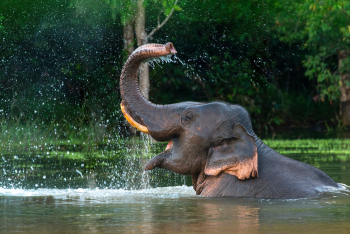
Indian Elephant
A subspecies of Asian elephants, Indian elephants are the national symbol of Thailand. This is due to their strength, longevity, and perception of wisdom, as well as being symbolic creatures to the Buddhist religion. Indian elephants live in Thailand’s grasslands and forests though loss of habitat is the primary reason for their endangered status. In the past, the country’s elephants were widely used for their strength in construction and logging, which greatly reduced their numbers. Using elephants for logging was banned in 1989, though elephant riding, a popular tourist activity, is also detrimental to elephants, many of which are mistreated. The elephants’ nomadic nature and herbivore diet add to the problems they face, as they need to forage for plant food most of the day and will wander onto farmland. Farmers either kill them or transport them to isolated areas surrounded by humans, where more human conflict awaits. The large, majestic creatures are also hunted as a trophy animal.
Agile Gibbon
In Thailand, three subspecies of agile gibbons are endangered: the Bornean white-bearded gibbon, the mountain agile gibbon, and the lowland agile gibbon. Most of the gibbons, which are in the ape family and have white eyebrows, face the loss of their jungle habitat due to human activity, including logging and development of land for agricultural use. Additional factors include illegal hunting for their meat or for trade as pets.
Gaur (aka Indian Bison)
The gaur is a tall species of wild cattle that is endangered in Thailand. Related to domestic cattle, gaur may be black, brown, or reddish in color with pale colored limbs. They live in Thailand’s mountainous northern regions and eat grass, leaves, stems, flowers, seeds, and fruit. They are poached as a trophy animal for their curving horns as well as for meat. Another threat is that gaur bile is used in traditional Chinese medicine, which is heavily reliant on plant and animal species. Gaur also face disease from domestic cattle, as they may wander onto land used for grazing livestock in search of food.
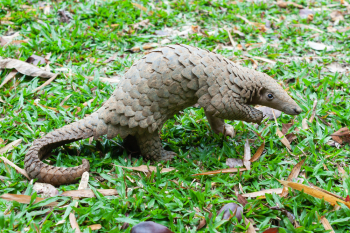
Other Endangered Mammals of Thailand
As in many other parts of the world, humans are the major threat to the world’s animals, and this is true in Thailand as well. Animals are impacted by loss of their natural habitat when forests are cleared for the building of roads and housing, or when they are hunted for their fur, meat, or other body parts. These factors have impacted two of the country’s wild bovine species, the kouprey and banteng, which are also affected by disease and fragmentation of their habitat. Loss of habitat has critically endangered the Neil’s long-tailed giant rat, the particolored flying squirrel, bumblebee rat, the lesser great leaf-nosed bat, otter civet, and ussuri dhole (aka Indian wild dog), which is also impacted by overhunting. Thailand’s critically endangered Sunda pangolin is desired in the illegal pet trade and for their many body parts used in traditional Chinese medicine (TCM). Pangolin are believed to be the world’s most trafficked mammal, with TCM a major impact on many other animals as well as plants. Native Thai people also hunt pangolin for their meat and scales. The country’s endangered Indochinese tigers are also highly valued, as their bones are used in TCM as are bones and other parts of the critically endangered Malayan tiger. Wild Asian water buffalo face competition for water and food from domestic livestock, which also spread diseases and parasites the buffalo are susceptible to. A degraded habitat from invasive plant species and pollution are additional factors. Whale sharks, with populations already reduced from overhunting in the past, are endangered due to boat collisions, pollution, or because they often become bycatch—species inadvertently caught in fishing nets that either die from entanglement or are killed. Another factor in their decline is the fact that the large species are slow growing and late to mature, making natural replenishment of their population difficult. The IUCN, the global authority on the world’s living species, estimates that one-fourth of all shark species face extinction and note that shark populations in Mediterranean and Thai waters are experiencing the highest rate of decline.
Endangered Plants of Thailand
The main factor affecting Thailand’s many endangered plants is loss of habitat, most often due to human activity. Destruction of habitat is a key factor threatening the tree species, Afzelia xylocarpa, as well as Aglaia perviridis and the evergreen, Aglaia tenuicaulis. Red sandalwood, limited to a particular region and naturally small in number, is endangered as it is valued for medicinal use. Anisoptera curtisii is a tree valued for wood, while Aquilaria malaccensis is valued for use in perfume and incense. Invasive species and those not native to the country also threaten Thailand’s diverse plant species. Additionally, fragmented areas of native vegetation, cut off through human development, face limited pollen and/or seed dispersal. When this occurs, plant regeneration is limited while inbreeding can lead to less tolerant species that are threatened by disease.
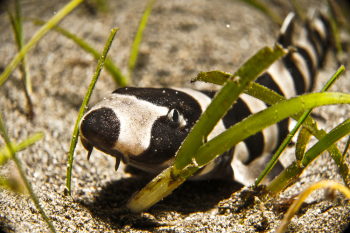
Endangered Fish of Thailand
Thailand’s endangered fish—among them the Mekong giant catfish, Asian bonytongue, Baramundi cod, and banded eagle ray —are affected by overfishing. The Gulf of Thailand’s brownbanded bamboo shark is considered a delicacy, while a range of shark fins are used in traditional Chinese medicine. Betta simplex, also called Krabi mouth-brooding betta, faces destruction of its natural habitat due to toxic runoff from chemicals used in agriculture as well as over-exploitation, as it is a popular aquarium fish. Some freshwater species, limited to small populations in some river systems, are endangered due to those very reasons.
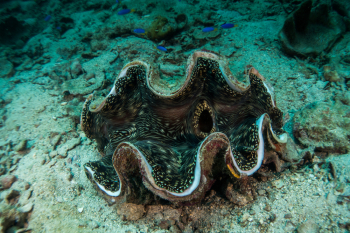
Endangered Invertebrates of Thailand
This expansive category explains the high number of endangered invertebrates in Thailand. Aside from mollusks, other invertebrates—those species lacking a backbone—include sponges, jellyfish, corals, sea urchins, worms, insects, spiders, and many more. Most of the Gulf of Thailand’s coral species are endangered due to overfishing, including through destructive fishing methods, as well as from polluted water and rising ocean temperatures. A wide number of factors affect these invertebrate species, including loss of habitat due to human activity, invasive and predator species, wetland drainage, dredging, pollution, and toxic sediment. Other threatened invertebrates in Thailand include giant clams and several species of crustaceans.
Article written for World Trade Press by Felicia Topp.
Copyright © 1993—2025 World Trade Press. All rights reserved.

 Thailand
Thailand 